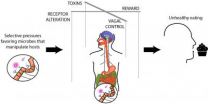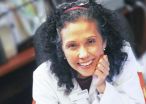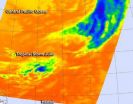(Press-News.org) New UC San Francisco research shows significant price differences for ten common blood tests in California hospitals, with some patients charged as little as $10 for one test while others were charged $10,169 for the identical test.
The analysis of charges at more than 150 California hospitals looked at blood tests that are often required of patients, such as lipid panel, basic metabolic panel, and complete blood cell count with differential white cell count.
Hospital ownership and teaching status help explain a portion of the variation – prices generally were lower at government and teaching hospitals. Factors such as location, labor costs, patient capacity and percentage of uninsured population generally did not account for the price differences, the authors said, making it difficult for patients to know their costs in advance and to "act as rational consumers."
The report will be published in BMJ Open on August 15, 2014.
Charges for a basic metabolic test ranged from $35 to $7,303, depending on the hospital; the median charge was $214. The most extreme price difference was found in charges for a lipid panel: the median charge was $220, but overall charges ranged from $10 to as much as $10,169.
The results are of particular concern, said the authors, since there isn't much room for variability in blood tests. Moreover, because the tests are identical across providers, consumers might be expected to think that hospital charges would be similar.
"You may hear people say that, 'Charges don't matter' or that 'No one pays full charges,'" said senior author Renee Y. Hsia, MD, an associate professor of emergency medicine at UCSF and director of health policy studies in the Department of Emergency Medicine. She is also an attending physician in the emergency department at San Francisco General Hospital and Trauma Center.
"However, uninsured patients certainly face the full brunt of raw charges, especially if they don't qualify for charity care discounts," Hsia said. "And as employers are switching to more consumer-directed health plans with higher deductibles and co-pays, the out-of-pocket costs of even insured patients can be affected by these charges."
The blood test analysis was based on charges assessed in 2011 by general, acute care medical/surgical hospitals. The majority of the hospitals were not-for-profit, urban, non-teaching facilities. On average, 41 percent of their patient populations were on Medicare and 25 percent were on Medicaid.
The blood test charges were based on hospital full rates before pre-payments or contractual adjustments.
The scientists noted that they were unable to quantify some factors which could help influence medical charges for blood tests: "For example, many quality hospitals may choose to invest in higher quality facilities, supplementary services and social services than others," they wrote in their report. "The costs of these differences, while of value to patients, are not easy to measure, However, they likely do trickle down into charges for all basic services, including blood tests."
Still, they wrote, few of these factors were significant predictors of the charges patients ultimately faced.
Price variation similarly occurs when patients are hospitalized, according to a separate study also led by Hsia and published in the August 2014 issue of PLOS ONE. In that analysis, hospital charges for an average California patient admitted for uncomplicated percutaneous coronary intervention ranged from $22,047 to $165,386, with a median charge of $88,350. Charges were higher at California hospitals located in areas with higher costs of living, in rural hospitals, and in hospitals with higher proportions of Medicare patients. However, these factors accounted for less than half the price variation, said the authors.
"To expect patients to be rational consumers is unrealistic when the system itself is irrational," Hsia said. "There is very little that we are able to point to that explains the variation, suggesting that the variations are not predictable and therefore a sign of huge inefficiency within the health care pricing system."
INFORMATION:
The blood test study data were obtained from the California Office of Statewide Health Planning and Development's Hospital Annual Utilization Data files, the Area Health Resources Files, and the Impact Files from the Centers for Medicare and Medicaid Services.
Co-authors are Yaa Akosa Antwi, an assistant professor of economics at Indiana University-Purdue University in Indianapolis, and Julia Brownell Nath, a medical student at the University of Chicago.
The research was supported by the National Center for Advancing Translational Sciences; the National Institutes of Health through a UCSF Clinical and Translational Sciences Institute grant (KL2TR000143); the Robert Wood Johnson Foundation Physician Faculty Scholars Program; and a UCSF Center for Healthcare Value grant.
UCSF is a leading university dedicated to promoting health worldwide through advanced biomedical research, graduate-level education in the life sciences and health professions, and excellence in patient care. It includes top-ranked graduate schools of dentistry, medicine, nursing and pharmacy, a graduate division with nationally renowned programs in basic, biomedical, translational and population sciences, as well as a preeminent biomedical research enterprise and two top-ranked hospitals, UCSF Medical Center and UCSF Benioff Children's Hospital San Francisco. Please visit http://www.ucsf.edu.
Charges for blood tests vary across California hospitals
UCSF study highlights difficulty of knowing health care prices
2014-08-15
ELSE PRESS RELEASES FROM THIS DATE:
Do gut bacteria rule our minds?
2014-08-15
It sounds like science fiction, but it seems that bacteria within us — which outnumber our own cells about 100-fold — may very well be affecting both our cravings and moods to get us to eat what they want, and often are driving us toward obesity.
In an article published this week in the journal BioEssays, researchers from UC San Francisco, Arizona State University and University of New Mexico concluded from a review of the recent scientific literature that microbes influence human eating behavior and dietary choices to favor consumption of the particular nutrients they ...
Stroke researchers link ability to self-administer medication with memory loss
2014-08-15
West Orange, NJ. August 15, 2014. Kessler stroke researchers and colleagues have identified an association between over-optimistic estimation of one's own ability to take medications accurately, and memory loss among stroke survivors. Results indicate that assessing patients for their ability to estimate medication skills accurately may predict memory disorder. The article, "Stroke survivors over-estimate their medication self-administration ability (MSA), predicting memory loss," was epublished ahead of print on May 28 by Brain Injury (doi:10.3109/02699052.2014.915984). ...
Visual exposure predicts infants' ability to follow another's gaze
2014-08-15
Following another person's gaze can reveal a wealth of information critical to social interactions and also to safety. Gaze following typically emerges in infancy, and new research looking at preterm infants suggests that it's visual experience, not maturational age, that underlies this critical ability.
The research is published in Psychological Science, a journal of the Association for Psychological Science.
"To the best of our knowledge, this is the first study showing that some aspects of the early development of social cognition is influenced by experience, even ...
NASA satellite spots a weakening Karina, now a tropical storm
2014-08-15
NASA's Terra satellite passed over Hurricane Karina before it weakened to a tropical storm early on August 15 and imagery showed the vertical wind shear was already taking its toll.
NASA's Terra satellite passed over Karina on August 14 at 2:40 p.m. EDT when it was still clinging to hurricane status and noticed that wind shear was already having an effect on the storm's structure. The Moderate Resolution Imaging Spectroradiometer or MODIS instrument captured an image that showed that the bulk of Karina's clouds were being pushed to the western side of the storm. That ...
NASA sees no punch left in Tropical Storm Julio
2014-08-15
Tropical Storm Julio doesn't have any strong thunderstorms or strong convection left in it according to infrared satellite imagery from NASA.
When NASA's Aqua satellite passed over Tropical Storm Julio on August 14 at 12:23 UTC (8:23 a.m. EDT), the Atmospheric Infrared Sounder known as AIRS analyzed the clouds and temperatures of the storm. The AIRS data showed that cloud tops had warmed and dropped lower in the atmosphere. That indicates that the strength behind rising air had weakened and was not forming strong, high thunderstorms with cold cloud tops.
There was a ...
Bigger government makes for more satisfied people, international Baylor study finds
2014-08-15
People living in countries with governments that spend more on social services report being more contented, according to a Baylor University study.
"The effect of state intervention into the economy equals or exceeds marriage or employment status — two traditional predictors of happiness — when it comes to satisfaction," said Patrick Flavin, Ph.D., assistant professor of political science in Baylor's College of Arts & Sciences.
The study — "Assessing the Impact of the Size and Scope of Government on Human Well-Being" — is published in the journal Social Forces. The researchers ...
Dynamic culture of a thermosensitive collagen hydrogel improves tissue-engineered peripheral nerve
2014-08-15
Tissue engineering technologies offer new treatment strategies for the repair of peripheral nerve injury, but cell loss between seeding and adhesion to the scaffold remains inevitable. In a study reported on the Neural Regeneration Research (Vol. 9, No. 14, 2014), a thermosensitive collagen hydrogel remained as a liquid when kept at temperatures below 10°C and gelled when the temperature was increased to 37°C in an incubator for 30 minutes, which was used as an extracellular matrix and combined with bone marrow mesenchymal stem cells to construct tissue-engineered peripheral ...
Incentives, innovation and growth
2014-08-15
Over the past decades, the economic sciences have seen fundamental breakthroughs in our understanding of human responses to incentives in the face of uncertainty and strategic interactions. But what is the scope and what are the limits for applying these models in the design of better institutions and better policies? And to what extent can they teach us what is needed to encourage the innovation that drives economic growth and social wellbeing? These are among the questions to be debated among 17 Nobel Laureates in Economic Sciences and approximately 450 aspiring young ...
New ways to treat solid tumors
2014-08-15
An international team of scientists has shown that an antibody against the protein EphA3, found in the micro-environment of solid cancers, has anti-tumour effects.
As EphA3 is present in normal organs only during embryonic development but is expressed in blood cancers and in solid tumours, this antibody-based approach may be a suitable candidate treatment for solid tumours.
The researchers from Monash University and Ludwig Cancer Research, in Australia, and KaloBios Pharmaceuticals, in the US, have had their findings published in the journal Cancer Research.
The ...
Guidelines can predict early menopause in child cancer survivors
2014-08-15
Girls with cancer who are most likely to become infertile after treatment can be identified using guidelines developed almost 20 years ago, new research shows.
The criteria – developed in Edinburgh – will help to select which girls should be offered the opportunity to freeze some tissue from their ovaries for use in the future.
Doctors are optimistic that the frozen tissue could one day help young cancer survivors to have children of their own.
Some cancer treatments can affect female fertility by bringing on early menopause. Freezing samples of ovary tissue before ...
LAST 30 PRESS RELEASES:
Numbers in our sights affect how we perceive space
SIMJ announces global collaborative book project in commemoration of its 75th anniversary
Air pollution exposure and birth weight
Obstructive sleep apnea risk and mental health conditions among older adults
How talking slows eye movements behind the wheel
The Ceramic Society of Japan’s Oxoate Ceramics Research Association launches new international book project
Heart-brain connection: international study reveals the role of the vagus nerve in keeping the heart young
Researchers identify Rb1 as a predictive biomarker for a new therapeutic strategy in some breast cancers
Survey reveals ethical gaps slowing AI adoption in pediatric surgery
Stimulant ADHD medications work differently than thought
AI overestimates how smart people are, according to HSE economists
HSE researchers create genome-wide map of quadruplexes
Scientists boost cell "powerhouses" to burn more calories
Automatic label checking: The missing step in making reliable medical AI
Low daily alcohol intake linked to 50% heightened mouth cancer risk in India
American Meteorological Society announces Rick Spinrad as 2026 President-Elect
Biomass-based carbon capture spotlighted in newly released global climate webinar recording
Illuminating invisible nano pollutants: advanced bioimaging tracks the full journey of emerging nanoscale contaminants in living systems
How does age affect recovery from spinal cord injury?
Novel AI tool offers prognosis for patients with head and neck cancer
Fathers’ microplastic exposure tied to their children’s metabolic problems
Research validates laboratory model for studying high-grade serous ovarian cancer
SIR 2026 delivers transformative breakthroughs in minimally invasive medicine to improve patient care
Stem Cell Reports most downloaded papers of 2025 highlight the breadth and impact of stem cell research
Oxford-led study estimates NHS spends around 3% of its primary and secondary care budget on the health impacts of heat and cold in England
A researcher’s long quest leads to a smart composite breakthrough
Urban wild bees act as “microbial sensors” of city health.
New study finds where you live affects recovery after a hip fracture
Forecasting the impact of fully automated vehicle adoption on US road traffic injuries
Alcohol-related hospitalizations from 2016 to 2022
[Press-News.org] Charges for blood tests vary across California hospitalsUCSF study highlights difficulty of knowing health care prices




